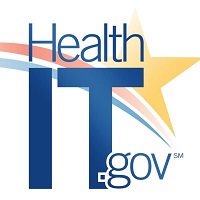 By Alicia Morton, DNP, RN-BC, Al Taylor, MD, Sam Meklir, MPA and Wes Barker, MS, ONC
By Alicia Morton, DNP, RN-BC, Al Taylor, MD, Sam Meklir, MPA and Wes Barker, MS, ONC
Twitter: @ONC_HealthIT
The ability to capture, use, and exchange many aspects of electronic health information has greatly advanced with the increased adoption of health information technology (health IT). Yet the use of data reflecting social determinants of health (SDOH) – the conditions in which people live, learn, work, and play – remains much more limited across healthcare. There is a growing recognition across healthcare that by capturing and accessing SDOH data during the course of care, providers can more easily address non-clinical factors, such as food, housing, and transportation insecurities, which can have a profound impact on a person’s overall health.
Through its Health IT Certification Program, the Office of the National Coordinator for Health Information Technology (ONC) supports the use of interoperable SDOH data that can be electronically captured, used, and exchanged. Since the release of ONC’s 2015 Certification Edition, 72 health IT developers have voluntarily certified 93 unique products to an SDOH-oriented certification criterion. These 72 developers provide technology to approximately half of all office-based clinicians and nearly a third of hospitals¹, which are certified to record, change and access these SDOH data elements in a patient record:
- Overall financial resource strain
- Social connection and isolation
- Highest level of education
- Exposure to violence (intimate partner violence)
ONC’s 2015 Edition certification criteria established a first step for the standardized collection of data. Additional data elements are still needed to represent other domains of SDOH data. As these are developed and identified, they are being added to the “Social, Psychological and Behavioral Data” section of the ONC Interoperability Standards Advisory (ISA). The ISA is our publicly available compendium of standards and implementation specifications that can be used in various health IT applications to address specific interoperability needs. (Look out for the 2020 ISA Reference Edition, coming out next month.)
ONC also works closely with our federal and private sector partners on other SDOH-related activities:
- Health IT Strategic Planning, including development of the 2020-2025 Federal Health IT Strategic Plan.
- Participating in the Gravity Project, a new community-led effort to develop an HL7® Fast Healthcare Interoperability Resources (FHIR®) implementation guide for SDOH data and more comprehensive SDOH terminology.
- Developing a department-wide SDOH data strategy led by the Department of Health and Human Services Office of the Chief Technology Officer.
- Informing efforts by the Centers for Medicare & Medicaid Services to integrate standardized SDOH data into post-acute care patient assessment instruments.
Stay tuned to HealthIT.gov for more announcements about our work supporting social determinants of health and presentations on the topic at our 2020 ONC Annual Meeting.
¹ This information is the result of analysis of certified products combined with attestation data of providers and hospitals using certified technology.
